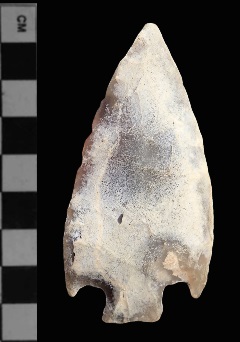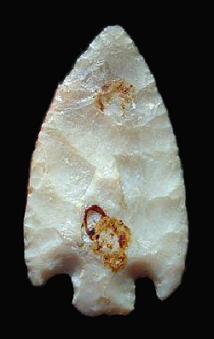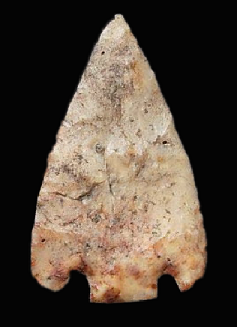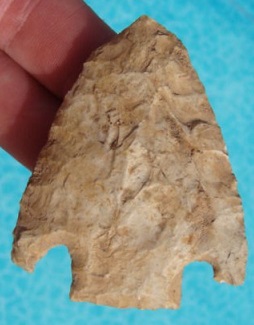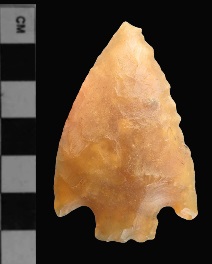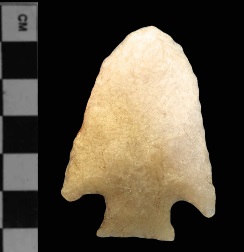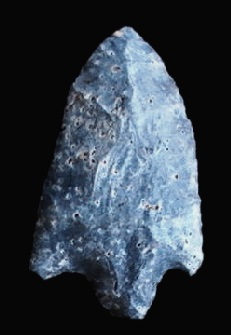Outline is Representative of Size and Shape:
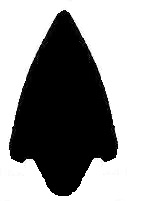
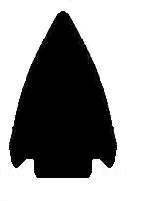

Subtype
II
Subtype
I
Name Details:
Identified By: Ripley P. Bullen
Named For: Type Site
Date Identified: 1968
Type Site: Culbreath Bayou Site, Tampa City, Florida
Identified By: Ripley P. Bullen
Named For: Type Site
Date Identified: 1968
Type Site: Culbreath Bayou Site, Tampa City, Florida
Point Validity:
Valid type
Bullen was a distinguished anthropologist and Curator Emeritus of the Florida Museum of Natural History. He was dedicated to identifying and typing projectile points from Florida. This point was named in a professional publication and is professionally a widely recognized type. This is a valid type.
Bullen was a distinguished anthropologist and Curator Emeritus of the Florida Museum of Natural History. He was dedicated to identifying and typing projectile points from Florida. This point was named in a professional publication and is professionally a widely recognized type. This is a valid type.
Culbreath Stemmed
Cluster: Edited by William Lunsford
Description of Physical Characteristics and Flaking Pattern:
This is a medium to large (1.5 to 3 inch) basal notch point with a thin elliptical cross section. The blade is broad and excurvate with the tip curving in and curving back in towards the base. The widest portion of the blade is on the bottom third of the blade. The shoulders are barbed and may extend from half way down the stem to the base of the point and are rounded. The stem varies from straight to slightly contracting, but never expanding with a straight to convex base. This point has a random flaking pattern.
Size Measurements:
Total Length - 55 to 110 mm (average 65 to 75 mm), Stem Length - 8 to 12 mm, Width - 35 to 55 mm (average 38 to 42 mm), Stem Width - 15 to 20 mm.
Total Length - 55 to 110 mm (average 65 to 75 mm), Stem Length - 8 to 12 mm, Width - 35 to 55 mm (average 38 to 42 mm), Stem Width - 15 to 20 mm.
Commonly Utilized Material:
Additional Comments:
Bullen (1975) distinguished two variants to the Culbreath type. Subtype I is considered the classic Culbreath point with barbs commonly extending to the base of the point and a broad stem with a flat base. Subtype 2 has slightly barbs with a longer stem that is contracting with a convex to straight base.
Schoder (W18), notes that examples from the Blackwater Pond Site indicate that as these points are re-sharpened they have distal changes making the point shorter, but very broad and may have the appearance of circular hafted scrapper.
Bullen (1975) distinguished two variants to the Culbreath type. Subtype I is considered the classic Culbreath point with barbs commonly extending to the base of the point and a broad stem with a flat base. Subtype 2 has slightly barbs with a longer stem that is contracting with a convex to straight base.
Schoder (W18), notes that examples from the Blackwater Pond Site indicate that as these points are re-sharpened they have distal changes making the point shorter, but very broad and may have the appearance of circular hafted scrapper.
Distribution: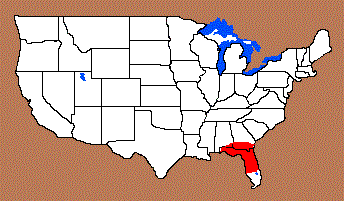
Distribution Comments:
This point is primarily found in central Florida predominately the Tampa Bay area. These points may be found into southeastern Alabama and southern Georgia with decreased frequency.
This point is primarily found in central Florida predominately the Tampa Bay area. These points may be found into southeastern Alabama and southern Georgia with decreased frequency.
Age / Periods:
Date: 4,000 - 3,000 B.P.
Cultural Period: Late Archaic
Glacial Period: Neoglacial
Culture:
Date: 4,000 - 3,000 B.P.
Cultural Period: Late Archaic
Glacial Period: Neoglacial
Culture:
Age Details:

